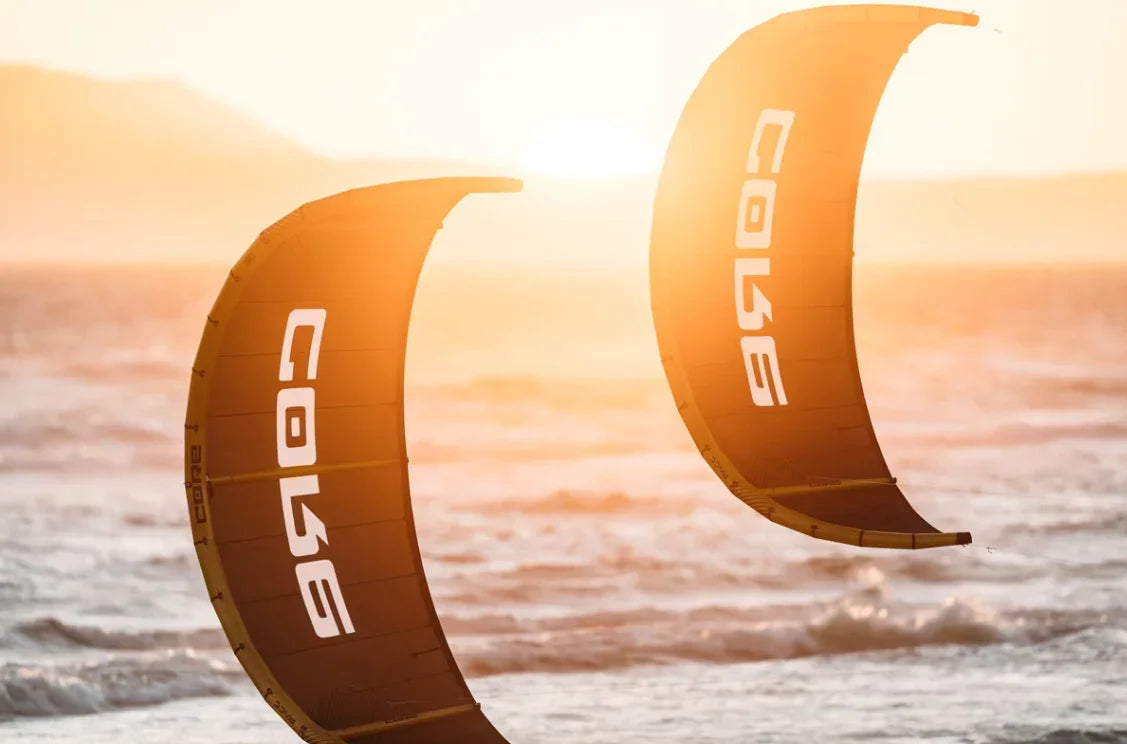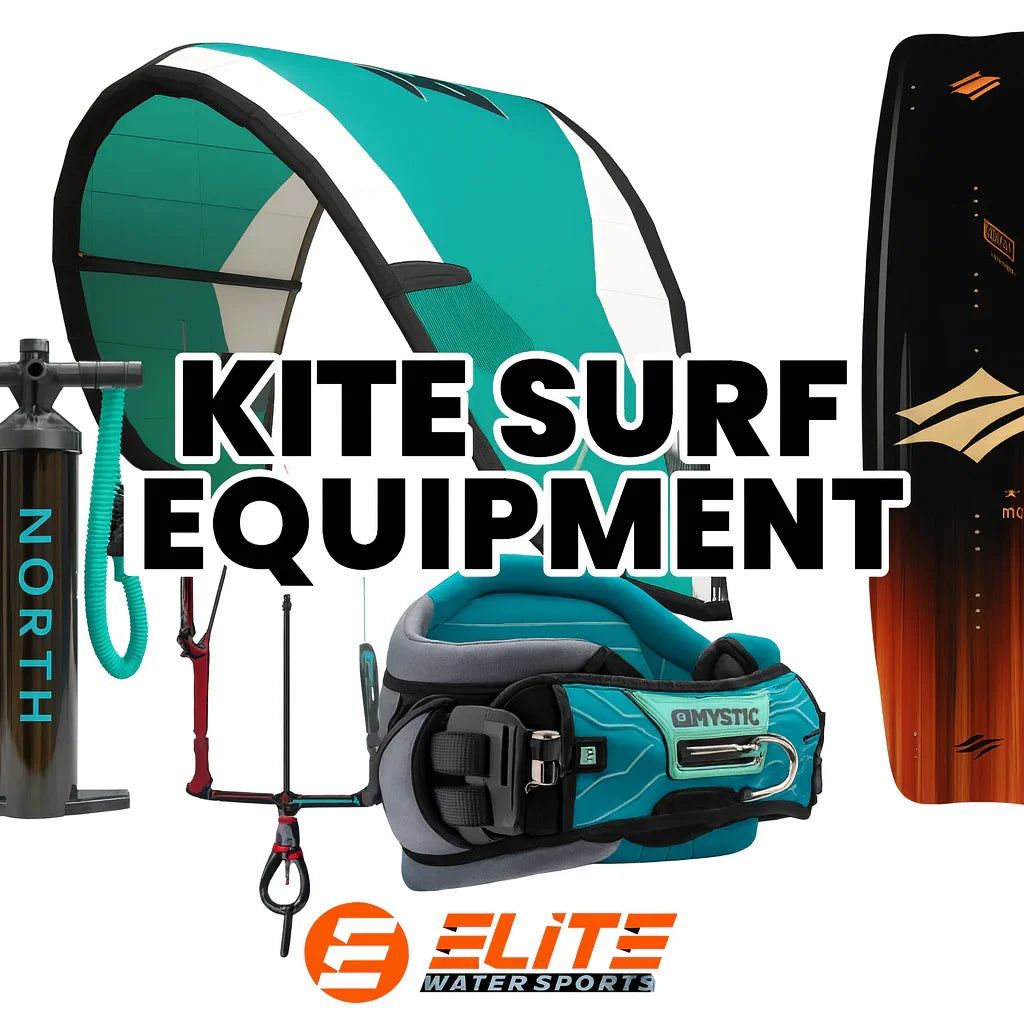ELITE WATERSPORTS
Last updated 1-06 -2025
Why Every Kiteboarder Needs a Hook Knife
Everything you need to know.

The Importance of a Hook Knife Kiteboarding
Kiteboarding is an incredible sport, and in modern times a safe sport but it comes with risks that every rider should prepare for.
One essential tool every kiteboarder needs is a kite knife. This simple yet powerful piece of equipment can be the difference between a minor inconvenience and a life-threatening emergency.
Whether you’re an experienced rider or a beginner, understanding the importance of a kite knife and how to use it could save your life or someone else’s.
A kite knife is specifically designed to cut through kite lines that are under tension. The recessed blade makes it safe to handle for your skin but it can slice through kite lines with ease.
From harness pockets to custom-sewn pouches or elastic straps, there are various ways to securely store your kite knife for quick access. Every kiteboarder should practice retrieving their knife, making it second nature to use in emergencies.
The importance of a kite knife becomes clear in real-life scenarios. Imagine a kiteboarder caught in strong currents with lines wrapped around a channel marker. Panic sets in, and without a knife, they might be pulled into dangerous waters.
Or consider a rider tangled in a crab pot buoy, unable to free themselves while waves crash over them. In both situations, a kite knife was the tool that made rescue possible and prevented disaster.
These are just a few examples of why this small tool is an essential part of your safety gear.
Kiteboarding is so much fun but it comes with a responsibility to yourself and the local community.
Regularly check your knife to see if it’s in good condition and make a habit of reminding others to carry one as well. Emergencies can arise when you least expect them, and being prepared can make all the difference. A kite knife is a small investment with the potential for life-saving impact, making it an essential part of every kiteboarder’s gear.




Table Of Contents
- Why you need a kite knife.
- Where to Store Your Kite Knife
- Real-Life Scenarios: When a Kite Knife Saved the Day
- Tips for Kite Knife Safety and Maintenance
- Our Kite Knives
- Why Elite Watersports
Why you Need a Kite Knife
A must have saftey tool: Kiteboarding is safe, but it comes with its share of risks. One essential piece of equipment that can make a difference in critical situations is the kite knife. This tool can save your life when the unexpected happens. In this guide, we'll explore why a kite knife is essential, how to use it effectively, and real-life scenarios where having one prevented serious harm.
Will a knife cut kite lines? Kite lines are incredibly strong, designed to handle immense tension during rides. However, this strength can become dangerous if the lines become entangled around your body or other objects. A kite knife allows you to cut through these lines quickly, ensuring your safety.


How a Kite Knife Works:
A kite knife is a small, lightweight tool with a blade encased for safety.
Here’s how it works:
Tension is Key: For effective cutting, there needs to be tension on the kite line. With tension, the knife slices through the line effortlessly, like "butter."
Are kite knifes safe? Yes, very safe and essential. The blade is housed within the tool, preventing accidental cuts to yourself or your gear. Think of it as a box cutter specifically designed for kiteboarding.
Ease of Access: Many harnesses come with designated pockets or clips to keep the knife secure and accessible.
What if my harness doesn't have a knife? If your harness doesn't have a place thats okay. You can sew one on or use an arm strap.
Where to Store Your Kite Knife
Your upwind angle is the single most important factor in jumping high. If you don’t nail this, speed and gear won’t make a difference. Here’s how to master it:
Visualize Your Box: Use landmarks like trees, boats, or channel markers to establish a boundary that aligns with the wind direction. This “box” will help you orient yourself to the wind.
Maintain a 45° Angle: Riding at a maximum 45° angle to the wind will create a “J hook” trajectory that hooks you into the breeze and generates more altitude.
Avoid Crosswind Riding: If you’re riding too low in the wind window, you’ll get long, low jumps instead of high ones.
Check your water ripples—they should be perpendicular to your direction. Pro Tip: Look back at your bubbles to ensure your path aligns with your upwind box. Small adjustments in your angle can dramatically improve your lift.

This is all a very clever way to get you to pop correctly. The more you carve into the wind, the higher you will be able to jump.
If you carve too hard into the wind, you will actually lose your edge and go downwind.
With this in mind, you can find that sweet spot Aaron is talking about. Think about carving hard upwind for maxiumum height on your jumps.
Pro Tip: Use leverage. Push your hips forward and use your body weight to load the rail of your kiteboard. This will put more umph into the pop and you won't loose any energy when sending it.
Where to store your kite knife
Where to Store Your Kite Knife:
Over the years, harness designs have evolved to accommodate kite knives. Here are a few storage options:
Harness Pockets: Brands like Mystic and Liquid Force include small pockets in their harnesses for storing a knife.
Some newer models even feature proprietary clip systems to prevent loss.
Velcro Attachments: Older designs rely on Velcro to keep the knife in place.
Custom Pouches: Some knives come with pouches that can be attached to your harness webbing for easy access.
Real-Life Scenarios: When a Kite Knife Saved the Day
A Kiteboarder Trapped by a Channel Marker
During a lesson: Arron McClearnon from Elite Watersports noticed a kiteboarder’s lines tangled around a channel marker.
The current was pulling her and her kite dangerously toward Tampa Bay. She panicked and couldn’t release her kite.
Using his kite knife, he quickly cut the tangled lines, freeing her and preventing a potentially life-threatening situation.
Entanglement with a Crab Pot Buoy:
On another occasion, one of Aarons friend’s lines became tightly wrapped around a crab pot buoy in the surf. The waves were pulling him underwater, and he couldn’t eject or untangle himself.
With his kite knife, he cut the line wrapped around the buoy, allowing him to swim to safety. Without the knife, the outcome could have been catastrophic.


A dangerous mistake I made years ago:
What happens with no hook knife? They say experience is the best teacher. About 12 years ago, I had a session where I broke all the rules and almost paid dearly for it. I went alone, in the cold with no hook knife. I had a weird crash and a line wrapped around the bar and somehow my mit by the thumb.
The kite was death looping, and my hand was stuck in the lines. I was getting pulled and thrown by the kite out to sea in the middle of winter in Michigan no less.
I remember desperately wishing for a hook knife, but I stayed calm. During a calm moment where the leading edge was stuck on the water between loops, I brought my board up and wrapped it around the other steering line to counter the loops. I was only able to do this as I was in boots and have leverage of my legs and core.
I made it back to shore and you better belive I got a new hood knife. This was a freak accident and increibly rare but it speaks to the importance of being prepared.
Tips for Kite Knife Safety and Maintenance
Make it a Habit: Check that your kite knife is securely attached to your harness before every session.
Practice Accessing It: Familiarize yourself with where it’s stored and practice retrieving it quickly.
Inspect Regularly: Ensure the blade is sharp and the knife is in good condition.
Encourage Others: Make sure your kiteboarding friends also carry a knife and know how to use it.
A kite knife is a small investment that can make a massive difference in emergencies. Whether you’re an experienced rider or just starting, having this tool on hand is essential for your safety and the safety of those around you.
Where can I buy a kite knife? For top-quality kite knives and accessories, visit Elite Watersports. We’re committed to equipping kiteboarders with the best gear to enjoy the sport safely.


Frequently Asked Questions About Kiteboarding Hook Knives
Do I need a hook knife for kiteboarding?
Yes, a hook knife is an essential safety tool for kiteboarding. Kite lines are incredibly strong and can become hazardous if they tangle around you, your equipment, or objects in the water.
A hook knife allows you to quickly cut through these lines in an emergency, potentially saving your life or someone else’s.
Where should I keep my hook knife while kiteboarding?
The best place to keep your hook knife is somewhere easily accessible during an emergency. Here are a few popular options:
Harness Pocket: Many modern harnesses come with a built-in pocket designed specifically for a hook knife.
Sewn-On Pouch: You can sew a small pouch onto your harness for a secure and custom location.
Elastic Band: Use an elastic band to attach the knife to your wrist or arm for quick access.
Spreader Bar Storage: Some harnesses have slots or Velcro storage in the spreader bar.
Choose a location that feels natural to access and practice retrieving the knife to ensure you’re prepared.
What scenarios require a hook knife in kiteboarding?
A hook knife can be lifesaving in several situations:
Line Entanglement: If kite lines wrap around your body, equipment, or objects, they can create dangerous tension.
Trapped by Currents: A knife can quickly free you if you’re dragged by tangled lines.
Tangled with Obstacles: Lines snagged on buoys, channel markers, or debris can be cut to free yourself or others.
What type of hook knife should I get for kiteboarding?
Look for a hook knife that is:
Durable: Made of corrosion-resistant materials to handle exposure to saltwater.
Safe: Designed with a recessed blade to prevent accidental cuts.
Sharp: Ensure the blade is capable of cutting through kite lines easily. Don't use a super old knife.
Compact: Small enough to store without adding bulk to your gear.
How can I ensure my hook knife is ready to use?
To keep your hook knife in top condition:
Inspect Regularly: Check the blade for sharpness and rust.
Practice Access: Familiarize yourself with its location and practice retrieving it.
Secure It Properly: Ensure it’s securely attached to your harness or chosen storage location.
Make sure it’s with you before you go. Do this with your regular pre launch checklist.
Can I kiteboard without a hook knife?
While you can technically kiteboard without a hook knife, it’s not recommended. Emergencies can arise unexpectedly, and having a hook knife can make a critical difference in your safety. It’s a small investment for peace of mind and potentially life-saving functionality. I almost paid the praice and you don’t ever want to end up in a situation where you wish you had one.
Are there any alternatives to a hook knife?
No, there are no effective alternatives to a hook knife for cutting through kite lines. Regular knives or multitools are not designed for the unique challenges of kiteboarding and can be unsafe or ineffective in emergencies. I know someone who uses a dive knife but it’s not practical and could be quite dangerous.
For more tips and recommendations, visit Elite Watersports and check out our selection of high-quality kiteboarding safety gear.
Check Out Our Kite Knives!
Where to take kiteboarding lessons in Florida.
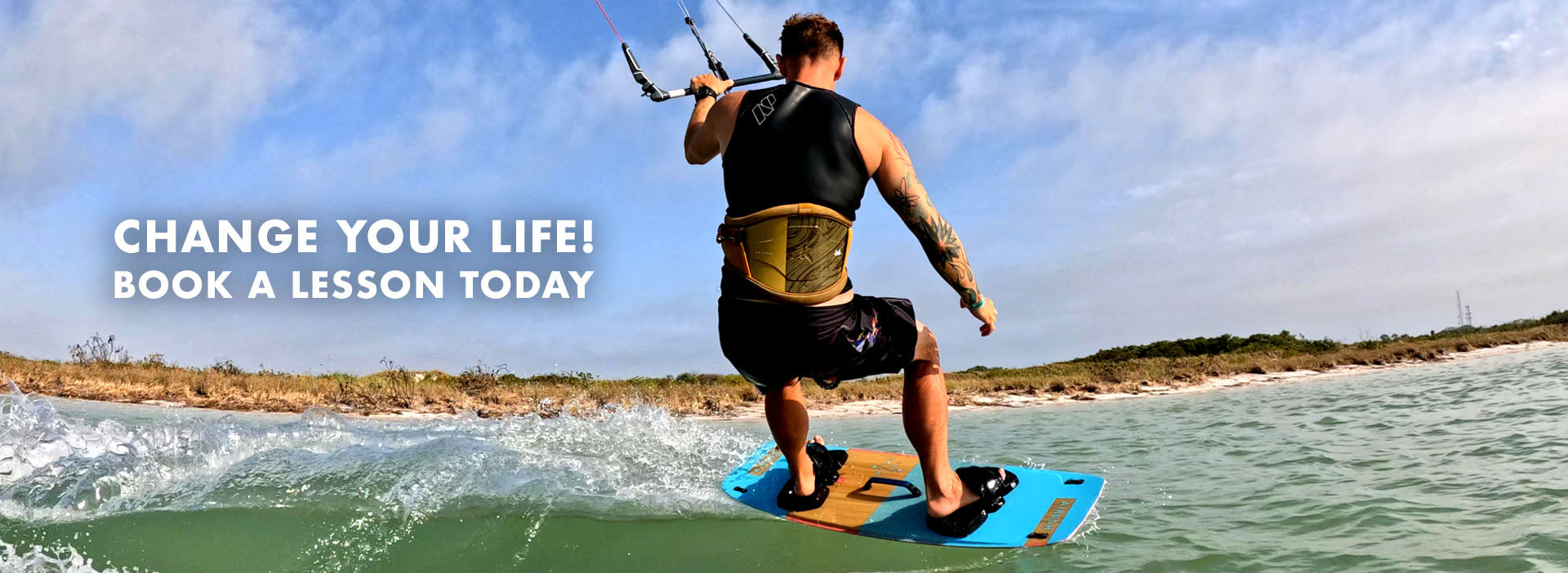 Reserve A Lesson
Reserve A LessonThe nearest kiteboarding shop and kite school that services Dunedin and Clearwater is Elite Watersports located in St Petersburg. Give us a call and we can get you up and riding in no time. We teach kitesurfing lessons at Skyway beach a short drive south of Dunedin. Our condions are also beginner friendly and perfect for learning.
Call us for more info on kiteboarding in Florida.
Elite Watersports has served the Tampa and St Petersburg area for years. They offer kiteboarding and wingsurfing lessons. They also have a retail shop equpit with all of the latest kitesurfing gear.
If you need help give us a call. .
(727)-800-2202
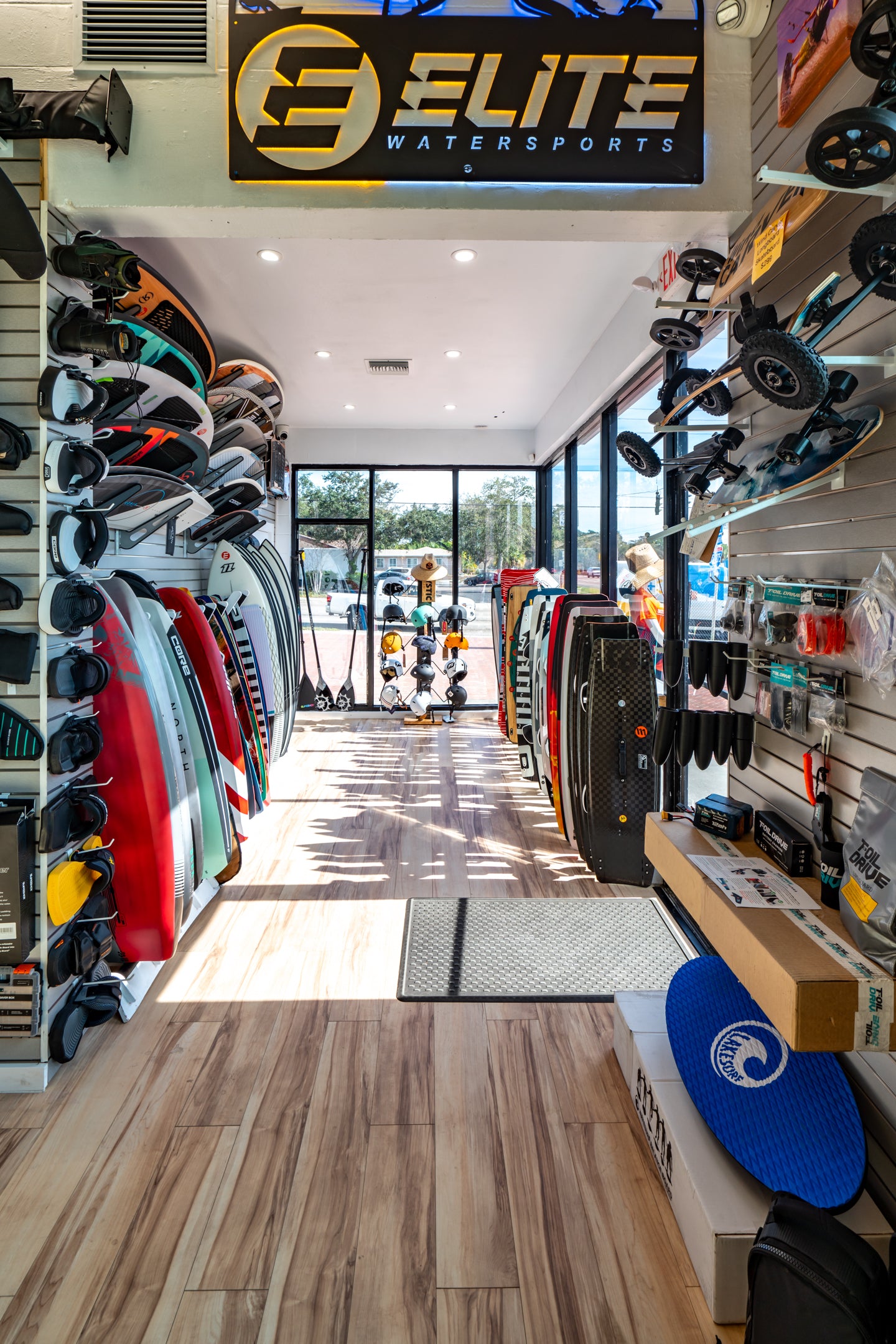
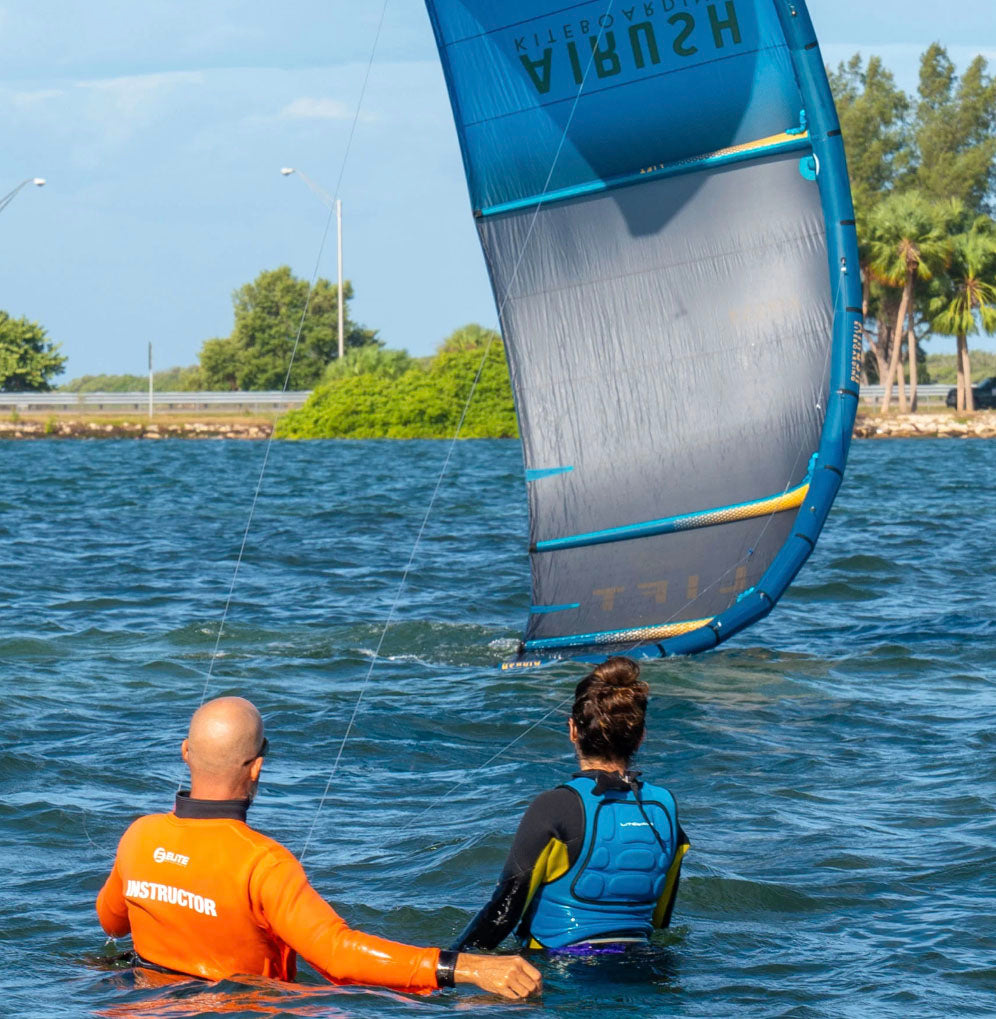
Author

Ryan "Rygo" Goloversic
Rygo is a globally recognized kiteboarder, Airush team rider and an advocate for wakestyle kiteboarding. When he's not writing articles or producing kite videos you can catch him competing on the KPLxGKA world tour or grinding it out in the gym
Tags
Kiteboarding self Rescue
You May Also Like
Want To learn more about kiteboarding?
Follow us to receive the latest update on our journey experience



